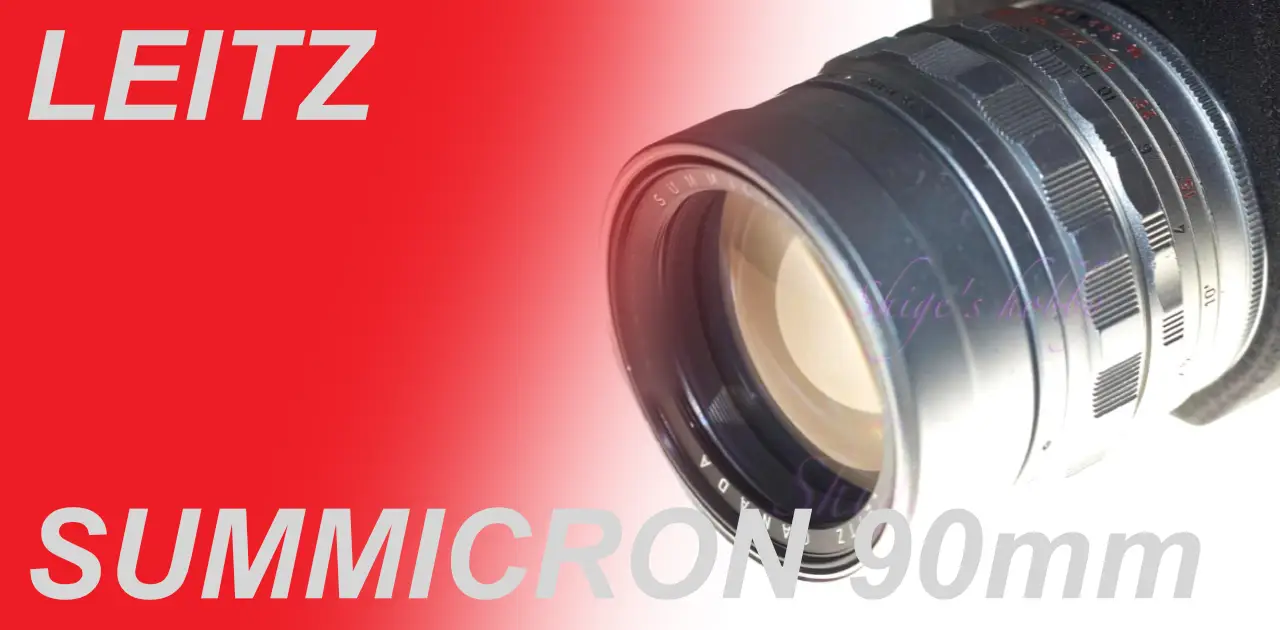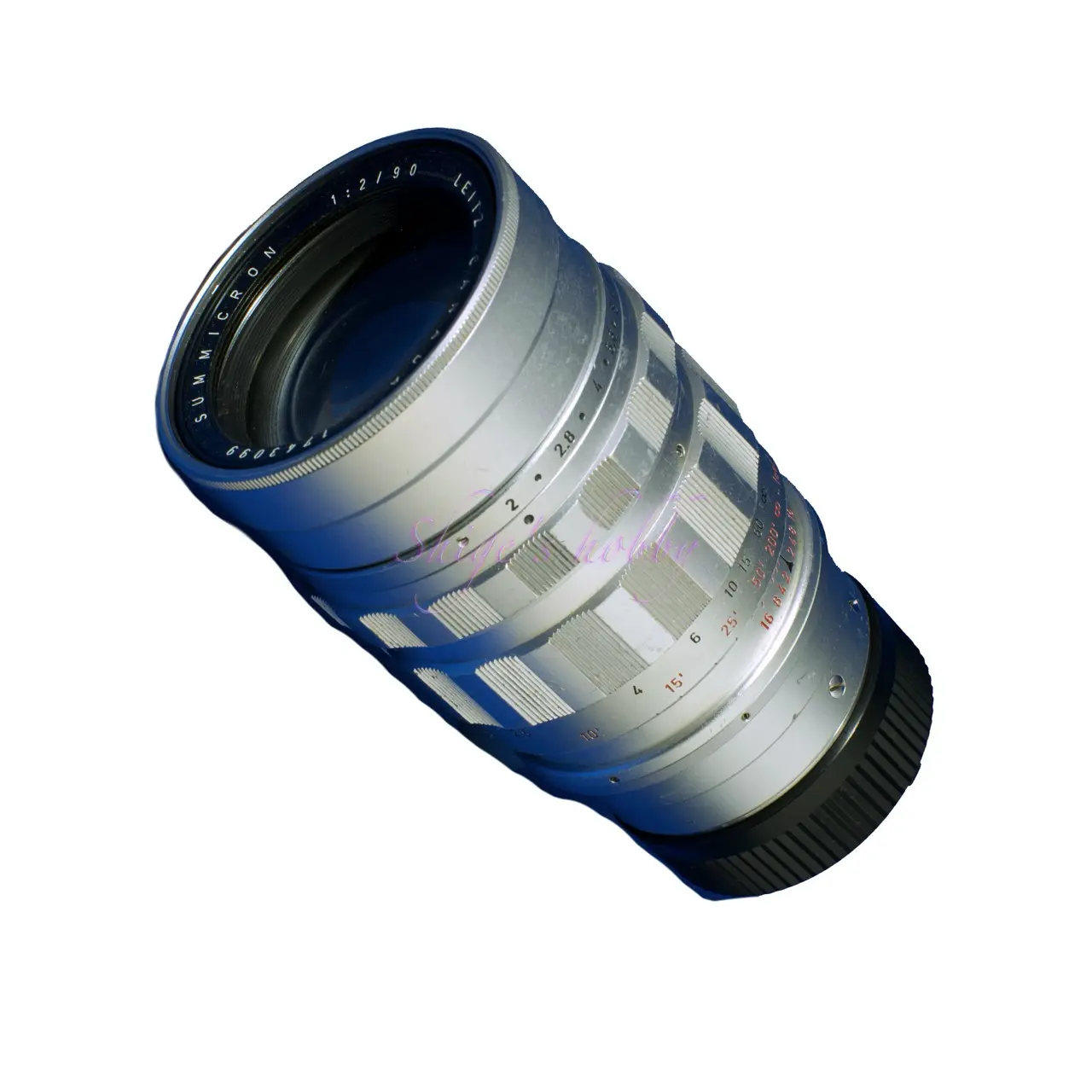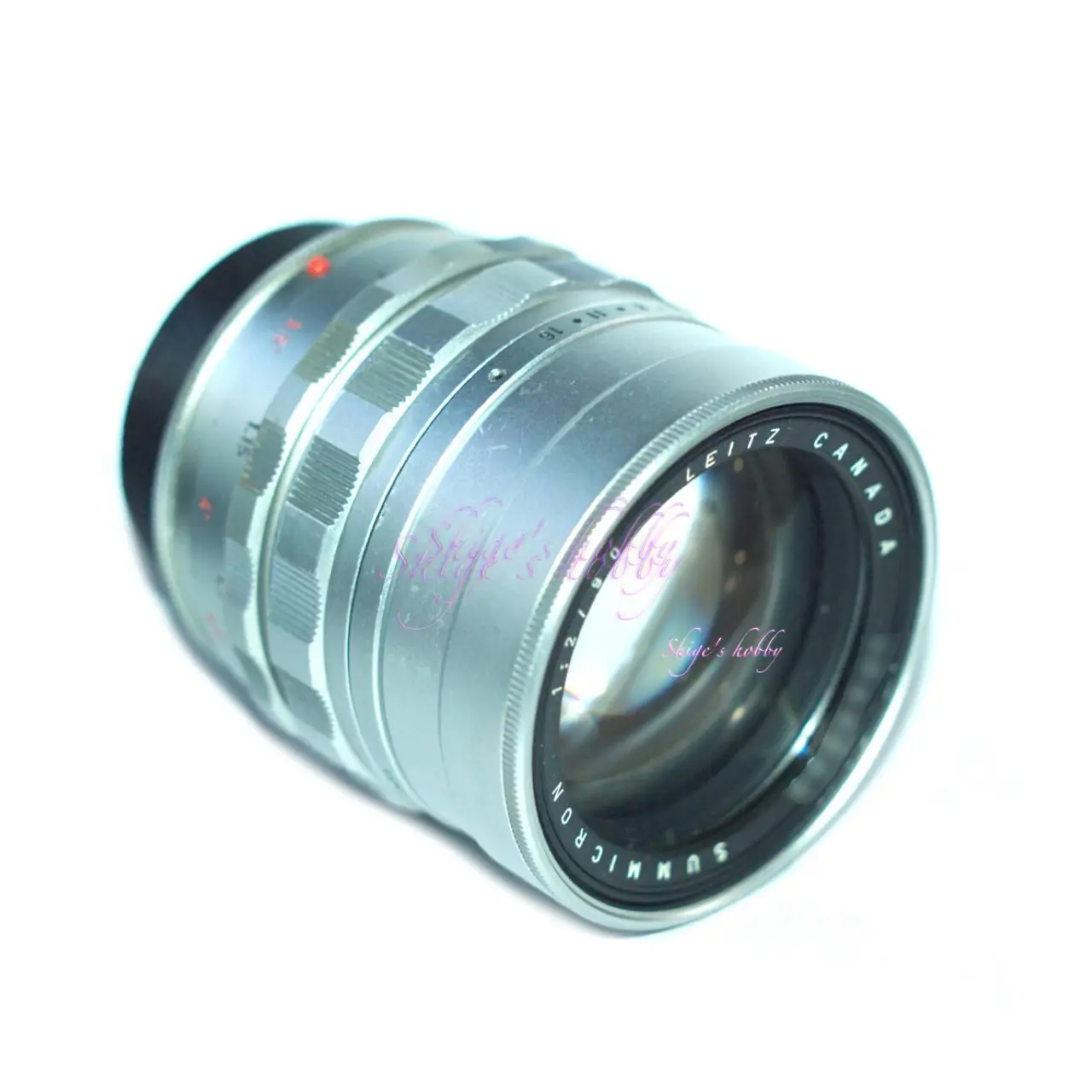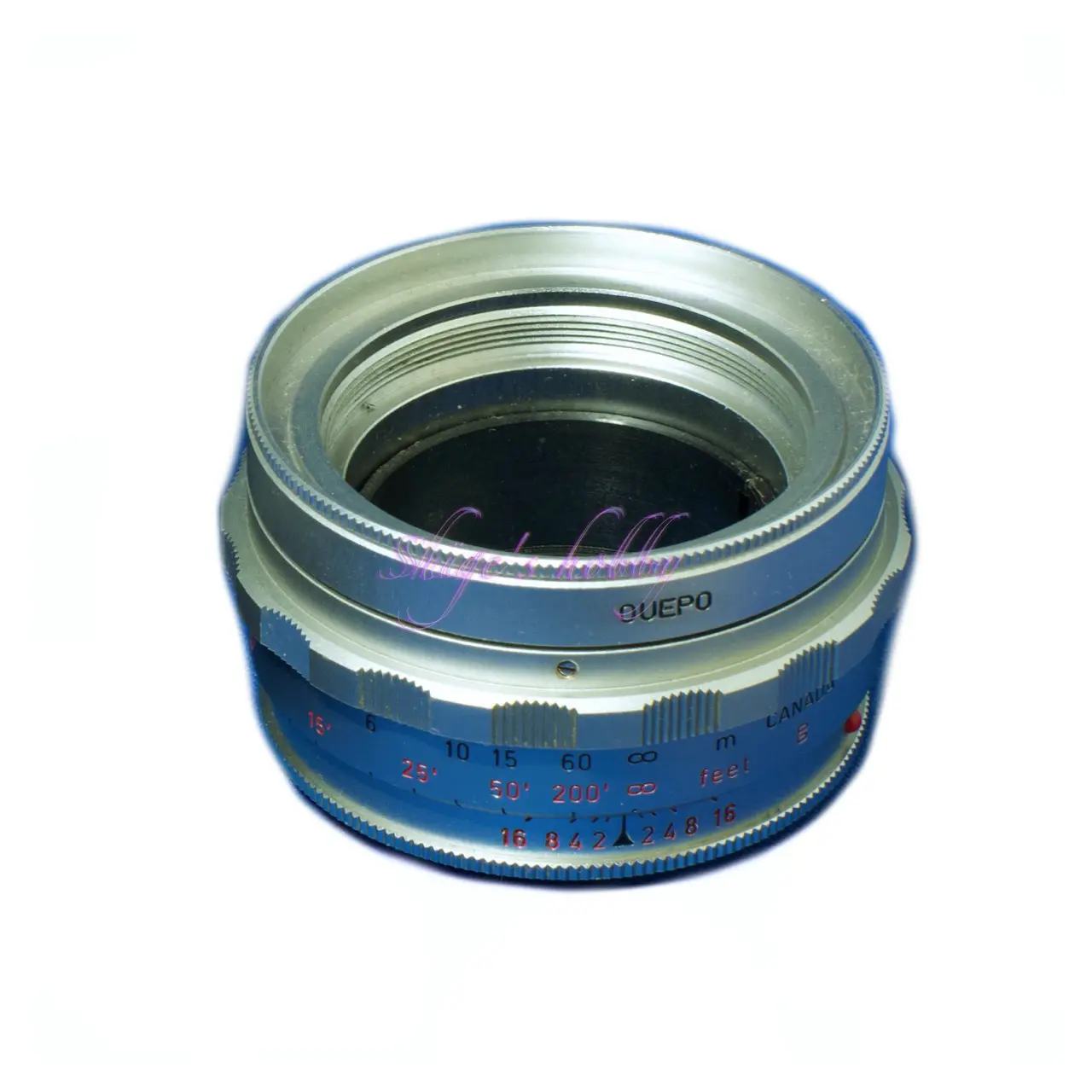Many variations of SUMMICRON 90

A review and photo examples using the Leica Summicron 90mm F2 48mm filter and hood with the VISOFLEXoto example of the SUMMICRON 90mm F2.
Table of contents
Gallery
- The sample photo were taken with the LEICA M9
Review


1.Overview
The SUMMICRON 90mm F2 is a medium telephoto lens that has been produced since the 1950s.
The lens we are introducing here was manufactured in 1960, and about 20,000 units of the same lens configuration were manufactured.
It is characterized by its wide variety of variations, including color, L/M mount, aperture ring shape, and compatibility with VISOFLEX options.
The main specifications are as follows, and detailed specifications are listed in the table.
- Aperture 2
- Lens configuration 6 elements in 5 groups
- Aperture blades 16
- Minimum shooting distance 1.0m
- Leica M rangefinder camera rangefinder coupling 1.0m
- Hood Built-in
- Lens filter diameter 48mm
2.Usability
The Summicron 90mm F2 silver barrel is a large-aperture medium telephoto lens for M-mount.
The lens introduced here has a filter diameter of 48mm (E48) and a silver barrel color.
This lens is also available in a black barrel.
The lens is very heavy, with a solid glass and iron feel.
When mounted on an M-mount Leica camera as an M-mount lens, the lens is heavy and the weight balance is poor.
On M-mount cameras with wide-angle viewfinder magnifications of x0.58x and standard 0.72x, the 90mm viewfinder frame is small, and focusing with the double image overlap method is difficult.
It is somewhat better with cameras with high viewfinder magnifications such as the Leica M3 and x0.85x, but the weight balance of the camera is not good, so the probability of camera shake increases.
The optical part of this lens is screwed into the M-mount helicoid, and the helicoid and lens will separate when you hold the tip of the lens and turn it.
The separated lens tip can be attached to a special helicoid for use with a Visoflex, which allows M-type Leicas to be used as SLR cameras.
As mentioned above, this lens is difficult to use with rangefinder cameras, so I attached a Visoflex mechanism to an M-type Leica camera and used it as a SLR camera.
Only some Summicron 90mm lenses that can be separated from the helicoid can be used with Visoflex. The lens variations of the Summicron 90mm are explained in the section on evolution of the Summicron 90mm (lens variations).
Thus, I was forced to use 90mm with an M-mount Leica, but since R-type Leica lenses are convenient for telephoto lenses over 90mm, I got rid of most of my M-mount medium telephoto lenses.
When I was sorting through my old photos, I noticed that the wet depiction had a flavor that modern lenses don’t have, and when I was researching the lens specifications to write this page, I almost got back into the Visoflex swamp that I had been stuck in for a while.
Also, in the 2020s, focusing is easy if you use the high-definition EVF of a mirrorless camera, so there is no difference in usability between M-mount, Visoflex-mount, and R-mount lenses. However, M-mount medium telephoto lenses have a minimum shooting distance of 1m as standard, so they are not suitable for close-up photography.
With a mirrorless camera, you can use an auxiliary helicoid, so this weakness of the minimum shooting distance can be recovered to some extent. The arrival of mirrorless cameras is one of the events that really makes you feel that it has changed the way we use M-mount lenses.
3.Summary
Evolution of the Summicron 90mm (lens variations)
The Summicron 90mm can be broadly divided into three types.
- A lens with a lens hood attached, known as a pre-model, produced in small numbers between 1957 and 1959.
- Model number SOOZI Silver (L39 mount)
- Model number 11127 / SOOZI-M Silver (M mount)
- A lens compatible with Visoflex, which was produced in earnest from 1959.
- Model number 11023 / SEOOF Silver (L39 mount)
- Model number 11122 Black (M mount)
- Model number 11123 / SEOOM Silver (M mount)
- Model number 11126 / OERDO (VISOFLEX short mount, preset aperture)
- Model number 11124 / OESBO Black (VISOFLEX short mount, normal aperture)
- Model number 11133 Lens unit for Visoflex, normal aperture
- Model number 11132 Lens unit for Visoflex・Preset aperture
- Lens manufactured from 1980 onwards, no longer compatible with Visoflex, with the lens configuration changed to Ernostar type
- There are two filter diameters, 49mm (E49) and 55mm (E55), and the number of lenses with 49mm filters is small. Perhaps because the lens configuration is the same, there is no distinction in order numbers (model numbers) between 49mm and 55mm.
- Model number 11136 Black (M mount)
- Model number 11137 Silver (M mount)
The reason there is some variation in books and the web is the difference in the starting point, whether the pre-model is considered the first generation or the Visoflex from 1959 is considered the first generation, and the difference is whether the generation of lenses from 1980, when they became exclusive to the M mount, is the second generation or the third generation.
The generations from 1959 onwards, which were manufactured a long time ago, have very different specifications depending on the Visoflex options and filter diameters that are described below. As it would be confusing to classify them by generation, we will stick to the above three classifications and, when describing them, we think it is better to describe the characteristics of the lens you are currently using rather than specifying the generation.
VISOFLEX
To use this lens with a Visoflex, you will need to prepare a short helicoid (focusing adapter 16463, ZOOEP, focusing adapter 16462) that was released during the Visoflex 2 era. Attaching the tip of the lens to the short helicoid makes it a Visoflex M mount lens.


The Visoflex helicoid 16463 (ZOOEP, silver) could be attached to an E48 Summicron 90mm.
However, when I tried to fit it onto a lens removed from an Elmarit M 135mm with glasses, there was an annoying protrusion on the screw-in part and I was unable to screw it in.
The helicoid focusing adapter 16462 could be used with an Elmarit M 135mm.
I did not attach the helicoid focusing adapter 16462 to an E48 Summicron 90mm, so I am not sure if it can be attached.
The E49 Summicron-M 90, released in 1963, has a detachable lens head and is the same generation lens as the Elmarit-M 135mm with glasses. It is believed that the helicoid and focusing adapter 16462 can definitely be used, but it is unclear whether it is compatible with the focusing adapter 16463 or ZOOEP.
The OUEPO extension tube for close-up photography with the Visoflex is available in black and silver, and is a screw-in type so it can be used with both the 16463 and 16462.
The Leica Wiki in the reference link states that the focusing adapter 16464 should be used when attaching the original Summicron-M 90mm and the Elmarit-M 135mm with glasses to a Visoflex, but the 16464 is an adapter used with the Elmar 65mm and cannot be used with the Summicron-M 90mm. In addition, the Leica Wiki also lists a photo of the exterior of the earliest SUMMICRON M90mm Silver as a photo of the second-generation Summicron, so I think the information there is incomplete.
The VISOFLEX mount has a long flange back and can be used with various mount adapters, and by using a Leica R mount adapter, it can be used with an R-type LEICA camera. It would be nice if there was an adapter that would allow M-type Visoflex lenses (flange back 69mm, estimated value) to be used with a Leica S (flange back 53mm), but unfortunately only mount adapters for L-type Visoflex lenses have been released by various companies. There is a gap of about 16mm between the Leica S and Visoflex M, so I hope someone will make one, but I have never seen one.
Specifications and Competitor
- The lens construction diagrams were traced and quoted from the handouts of each company, and the size and position have been adjusted by us, so they are not exact.
| Item | SUMMICRON 6 elements in 5 groups | SUMMICRON 5 elements in 4 groups |
| Focal length(mm) | 90 | 90 |
| Max aperture | 2 | 2 |
| Min aperture | 16 | 16 |
| Leaf blade | 15 | 8 |
| Lens Construction | 6 elements in 5 groups | 5 elements in 4 groups |
| Min distance(m) | 1.0 | 1.0 |
| Length(mm) | 110 | 77 |
| Max diameter(mm) | 66 | 62.5 |
| Filter size(mm) | 48 or 49 | 49 or 55 |
| Weight(g) | 660 | 484 |
| Release year | 1959〜 | 1982〜 |
Reference links
- SUMMICRON-M 90mm F2-1st@Leica wiki(English)
- SUMMICRON-M 90mm F2-2nd@Leica wiki(English)
- Classic Camera Selection Book 19 How to Identify Leica Lenses (Asahi Sonorama)
- It describes the specifications and the differences between the specifications, and there is no mention of lens description.
- A lens configuration diagram is included in the appendix.
Update history
- 2025.4.3
- 2024.9.8
- 2024.05.01
- 2023.06.06
Affiliate links
- Amazon Affiliate Link Leica Lens
- Amazon Affiliate Link Leica Books
- Amazon Affiliate Link / Classic Camera Specialty

Leave a Reply